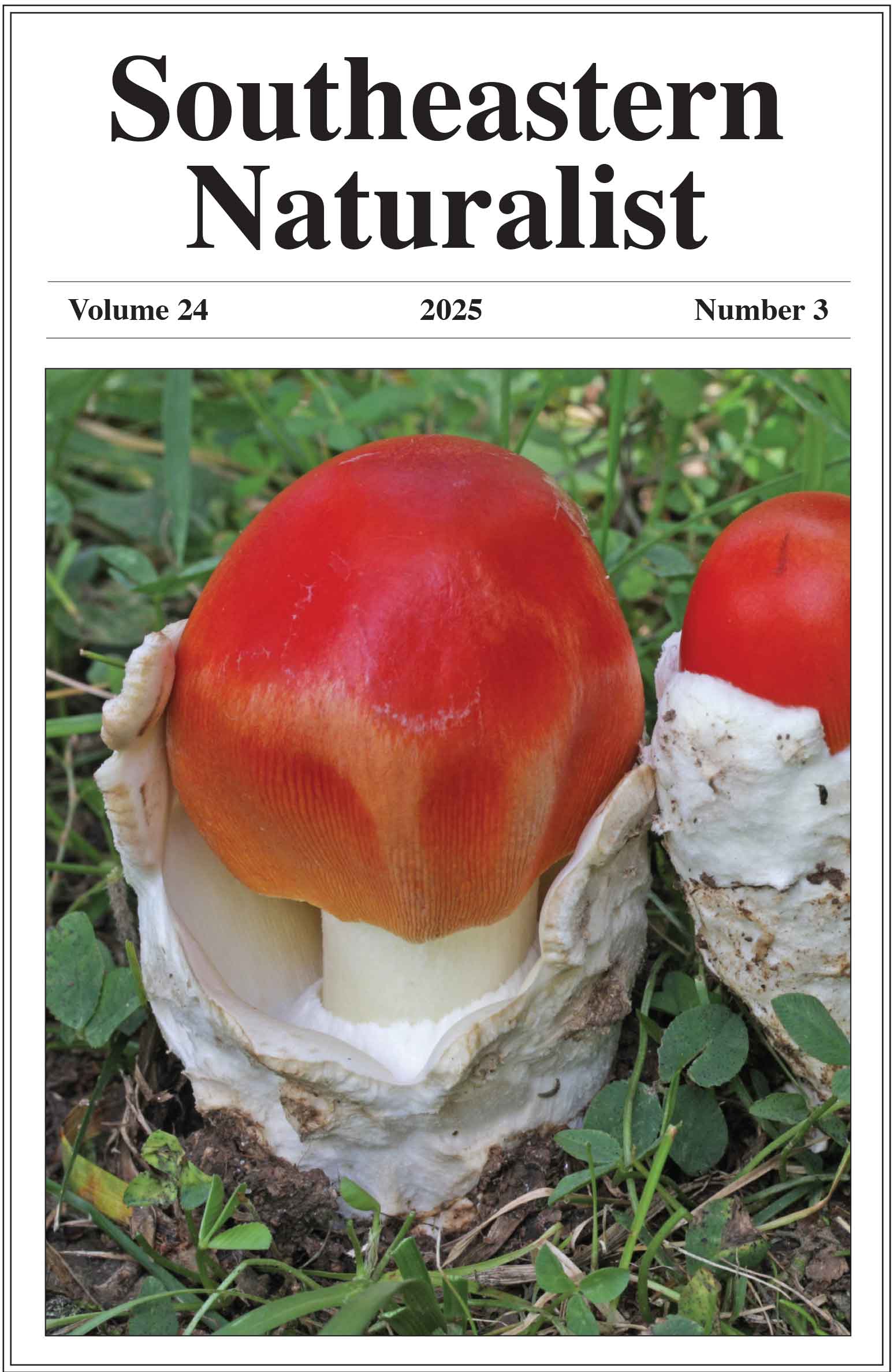Observations of Osteophagia, Kleptoparasitism, and Cannibalism in American Black Bear Diet via Animal-borne Camera Collars in the Central Appalachian Mountains
Brogan E. Holcombe1,*, Kevin R. Bayne1, Robert S. Alonso1,2, David McNitt1,3, and Marcella J. Kelly1
1Virginia Tech, Department of Fish and Wildlife Conservation, Blacksburg, VA 24061. 2Caesar Kleberg Wildlife Research Institute, Texas A&M University Kingsville, Kingsville, TX 78363. 3Bureau of Land Management, Royal Gorge Field Office, Cañon City, CO 81212. *Corresponding author.
Southeastern Naturalist, Volume 24, Issue 2 (2025): N15–N22
First published early online: 16 June 2025
Abstract
Documenting unusual items in the diet of Ursus americanus (American Black Bear) is challenging due to the inherent difficulties in detecting rare items in scat samples and the elusive nature of these animals in their natural habitats. In the summers of 2018 and 2019, we used camera video collars placed on 15 Black Bears and recorded instances of osteophagia (chewing or consumption of bones), kleptoparasitism (consumption from food acquired by other species), and cannibalism (consumption of conspecifics). Across the 15 Black Bears, we documented 29 osteophagia events, 9 kleptoparasitism (from felid and rodent caches) events, and 3 cannibalistic events. These rare occurrences accounted for only a small proportion (0.0061) of the total feeding events, but documentation was made possible using novel biologging methods, such as camera collars, to provide new insight into foraging ecology.
![]() Download Full-text pdf (Accessible only to subscribers. To subscribe click here.)
Download Full-text pdf (Accessible only to subscribers. To subscribe click here.)
Access Journal Content
Open access browsing of table of contents and abstract pages. Full text pdfs available for download for subscribers.
Issue-in-Progress: Vol. 24( 4) ... early view
Check out SENA's latest Monograph and current Special Issue in progress:













 The Southeastern Naturalist is a peer-reviewed journal that covers all aspects of natural history within the southeastern United States. We welcome research articles, summary review papers, and observational notes.
The Southeastern Naturalist is a peer-reviewed journal that covers all aspects of natural history within the southeastern United States. We welcome research articles, summary review papers, and observational notes.